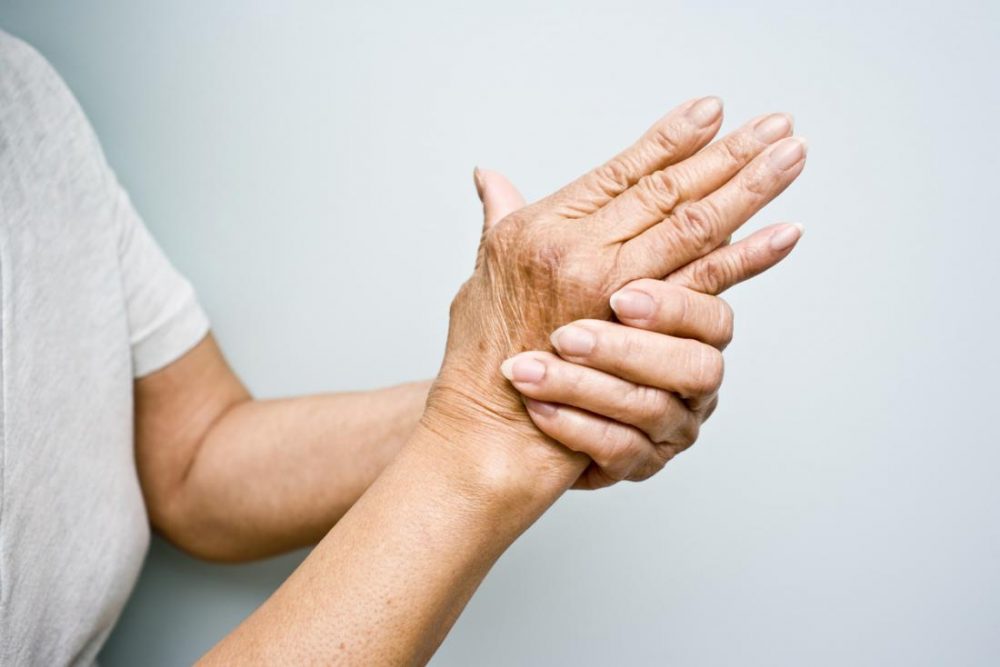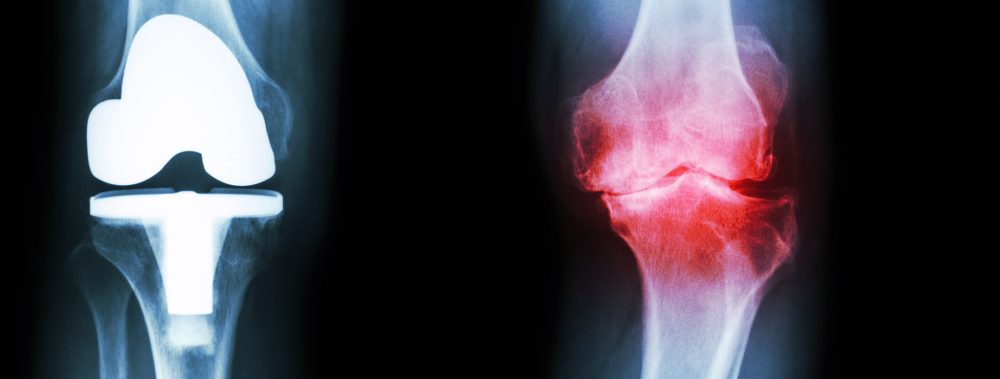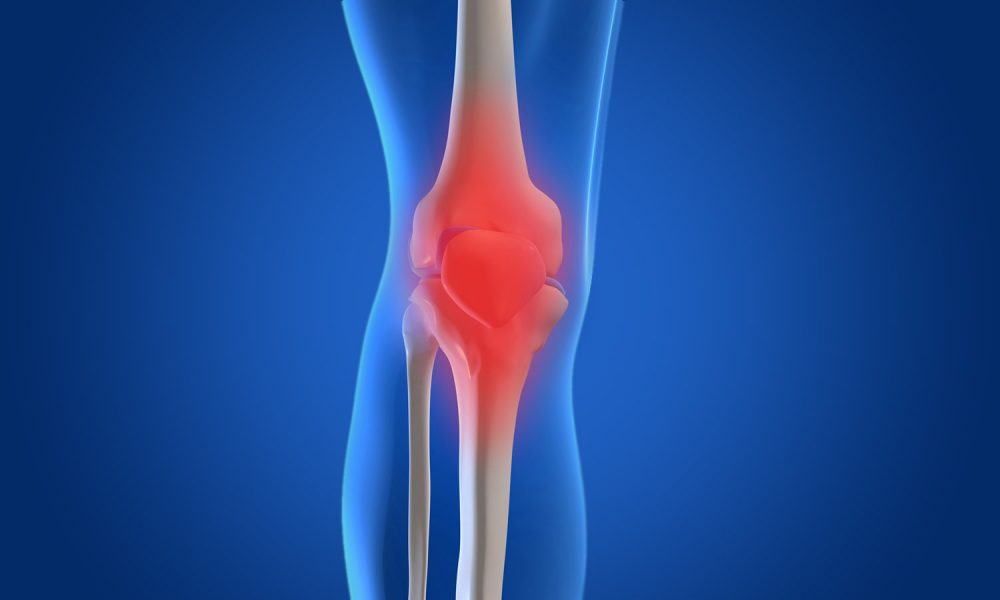
| Osteoarthritis (OA) is a type of degenerative joint disorder, which manifests as a failure of a diarthrodial joint. Often described as “Wear and tear”, osteorathritis, involves a complex degeneration of the joints. In fact the main problem in osteorathritis is the degeneration of the articular cartilage that covers the joint. Articular cartilage has no blood supply. It derives nutrition from the synovial fluid, a lubricant produced by lining sinovial membrane and through diffusion of nutrients from underlying cavellous bone. As the disease worsens the cartilage may become baldly workout, cracks and fissures start appearing and the cartilage become thin and dry. Eventually the bones start rubbing against each other and he ligaments become strained and weakened. This causes a lot of pain; limitation of movements and the alignment of the joint may get deranged. Osteorathritis is limited to the joints and does not cause any systemic symptoms. Normally there are no nerves in the cartilage but as healing starts in the cartilage nerves grow making it painful. | NORMAL JOINT |
| OSTEOARTHRITIC JOINT | The areas of the body most often affected by osteorathritis are the hip, knee, fingers, feet and spine. The disorder affects each joint different but the symptoms can include:Stiffness Pain Weakness or numbness |
| CAUSES & RISK FACTORS Osteoarthritis is primarily due to breakdown of particular cartilage with poor repair. Although the exact cause of arthritis except in some minor types is not known. However there are some risk factors which and the causation arthritis. Three factors must operate (a) Direct Trauma (b) Faulty Lubricant Synovial fluid (c) Faulty underlying bone | OSTEOARTHRITIC JOINT |
1. AGE
Osteorathritis is not a result of aging but age allows many of the other causes to damage the joint, hence the disease is associated with ageing population. Women suffer more from involvement of peripheral joints, specifically the knee joint. Women over the age of 45 years show a prevalence of 30%, which is higher towards older age group. Post menopausal tightening of bone (Osteoporosis) is responsible along with poor nutritive support to cartilage.

2. RACE
Race plays an important role ion both pattern as well as prevalence of OA while races are move prove to this disorder, than coloured races.
3. TRAUMA
Trauma to the joint seems to enhance the occurrence of arthritis. It disturbs thealignment of the joint and over a period of time. This misalignment may lead to excessive stress and eventually wear and tear leading to arthritis.
4. REPETITIVE JOINT USE
Pattern of joint involvement is dependent upon the occupation as well repetitive movements may lead to excessive strain, leading to erosion and joint damage. Ankle joint involvement is common ion dancer, elbow involvement in certain sportsperson.
5. OBESITY
The most common risk factor for OA of weight bearing joints is obesity. The severity of OA rises proportionately with higher level of obesity; obese women are more likely to be affected them obese makes.
6. GENETIC PREDISPOSITION
Genetic play an important role in development of arthritis. If you have a family history of OA, you are at increased risk. A missing gene will lead to poor repair of damaged cartilage.
7. COGENITAL DEFECTS
Abnormal positioning of bones due to congenital defects can cause arthritis in long run. Congenital metabolic disorders can also cause Osteoarthritis.
8. SYSTEMIC DISEASE
Diabetes & hypertension are associated with a larger prevalence of OA, especially of the weight bearing joints, most often the knee and the ankle joints. Women seem to be more proving to this condition than males. This basically is due to clogging of Blood vessles. One should appreciate that drugs used to treat hypertension can cause Osteoarthritis.
SIGNS OF OSTEOARTHRITISIn arthritis, the compelling symptoms is pain and stiffness, which forces a patient to seek medical advice. Apart from pain there is stiffness, cracking, deformity and swelling of joints. As inflammation increases, these symptoms get aggravated. Which is really a frustaed attempt of healing by body.
PAIN
It could be a mild to moderate dull ache in the beginning. It usually gets aggravated after the use of joint while it disappears on rest. With progress of the disease, the pain becomes severe and persistent and the movements get progressively restricted due to pain. Eventually it becomes persistent even on rest and can even disturb sleep.
STIFFNESS
The affected joints are often stiff especially in the morning. After prolonged activity, like sitting for a long time, the joint may lock. In early stages, the stiffness is temporary, but as the disease worsens, the range of movement gradually shrinks.
JOINT CRACKING
In advanced stages there may be cracking called crepitus, which may be heard when the joint is moved. It is quite common in arthritis of knees. It is usually painless with dull sensation.
LIMITED FLEXIBILITY
The early stages of stiffness is gradually replaced by increasing loss of mobility due to pain as the disease progresses
SYMPTOMS IN YOUR JOINTS
- Hips: – pain or aching in your thigh, grain, hip or buttocks.
- Fingers: – Red swollen tender, aching joints ion your fingers, numbness or tingling ion your finger tips.
- Knees: – Feeling of tenderness when you bend, grating or rubbing feeling inside the knee, pain when moving up and down the stairs.
- Spine: – Pain at the base of your neck or in your arms or legs, stiffness in your lower back, numbness or weakness ion your arms or legs.
- Muscular cramps

DIAGNOSIS
No biochemical investigations confirm the diagnosis of arthritis; it is based on physical examination, radiology of the affected joint to confirm the diagnosis and MRI
Blood tests can also help to rule out the disease with similar symptoms.
TREATMENT
The aim of the treatment of OA is to
(a) Reduce the pain
(b) Improve mobility.
(c) Minimize disability.
The methods of treatment are: –
(A) Physical Therapy: –
(1) This involves application of heat to the joint to reduce pain and stiffness
(2) Protect your joints from injury by reducing an activity or motion that causes pain or pressure.
(3) Getting regular exercise for various joints is important as exercise helps by strengthening the particular muscles that support the joint. Although it may hurt to move the joint, but inactivity can cause the joint to become stiff and even more painful. Moving your joints will also maintain strength in the muscles that support them, which helps protect them from further damage and pain low-impact activity like waling, swimming or biking are recommended. Exercise increases blood supply of joints and around.
4)Weight control: – If you are overweight, losing weight well help slow the progression of osteoarthritis by taking excess physical stress off your already painful joint. The best way to loose weight is to reduce intake of calories and fat, Aim for a low-fat, high fibre diet as this will improve calcium absorption performance, bone & other chronic disorders ion which calcium may have a protective role.
(B) Drug Therapy: Includes:
- Pain killers as paracetamol
- Drugs that reduce pain and inflammation like Ibuprofen, Piroxicam, Diclofenac, Nimesulide (NSAIDS) It is essential to warn the patient that drugs cannot be taken for a very prolonged periods, and that they do not give a complete cure to the symptoms of the disease.
- Calcium Supplements: – Calcium supplements in postmenopausal women may reduce paid very minimally.Dietary supplement: – Glucosamine and chondroitin administered by a certified orthopedic doctor (after diagnosis) helps to stimulate the synthesis of new cartilage and at the same time inhibit degradive enzymes that destroy cartilage.
This helps to normalize the cartilage matrix, in essence treating the disease at cellular level. - Antioxidants have also shown a definite beneficial role in improving the clinical picture of osteoarthritis. Vitamin C also helps to reduce and limit the cartilage damage seen in OA. Vitamin E and other rare minerals like Seluinium help solve problem.
In some cases, surgery may be necessary to correct a deformity, to improve the movement in a joint or to replace a joint with an artificial device. An orthopedic surgeon performs these operations. Even before a replacement of joint surgeon may advice you to reduce your body weight if you are obese. Surgical interference can be done in form of Arthoscopic bandage and house clearance by introducing small thin telescope to join, correcting alignment by cutting bone or putting artificial joint. These are expensive procedures.
Do not go on a “crash diet” instead aim at eating small meals, which should provide carbohydrate, fiber, protein and plenty of fresh fruits and vegetables. Try gentle exercise to keep your joints mobile and less painful.
Though aging cannot be stopped, it can be delayed, Remember prevention is better than cure.
Disclaimer
The Content is not intended to be a substitute for professional medical advice, diagnosis, or treatment. Always seek the advice of your physician or other qualified health provider with any questions you may have regarding a medical condition.